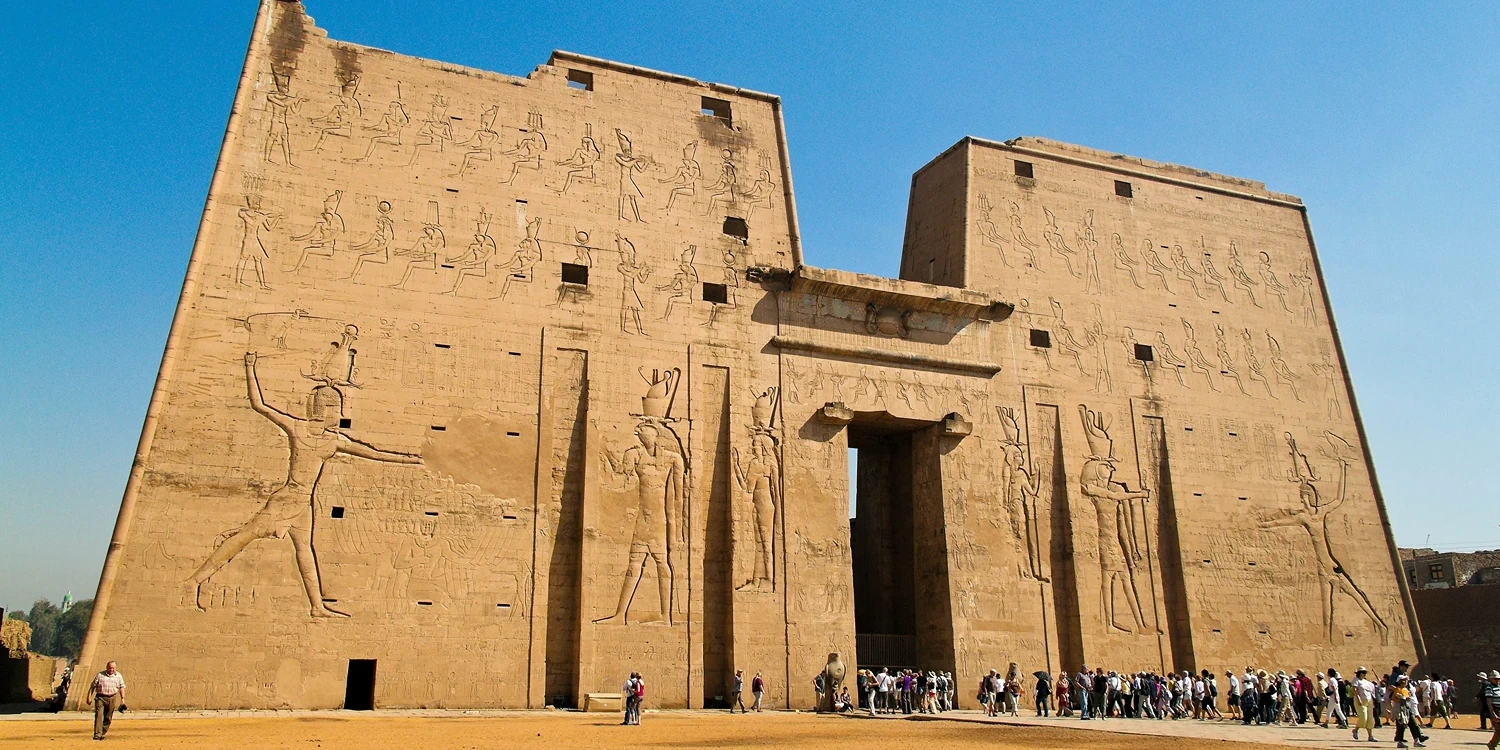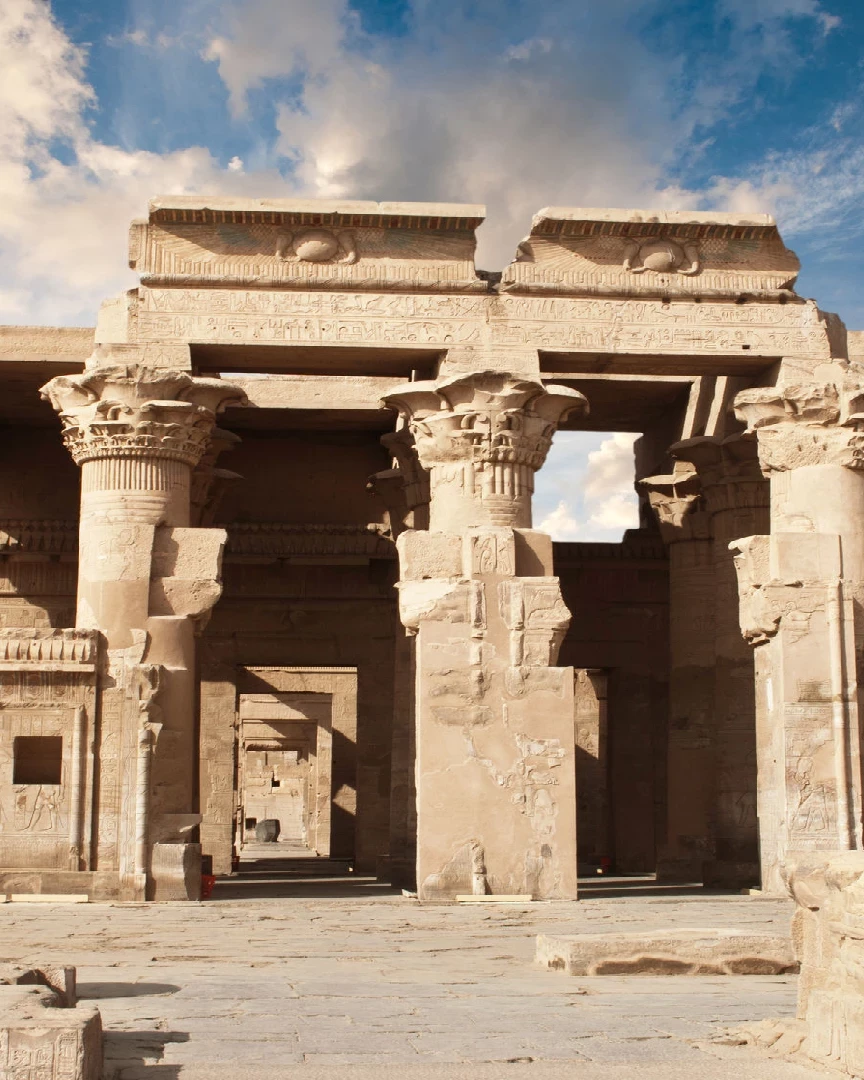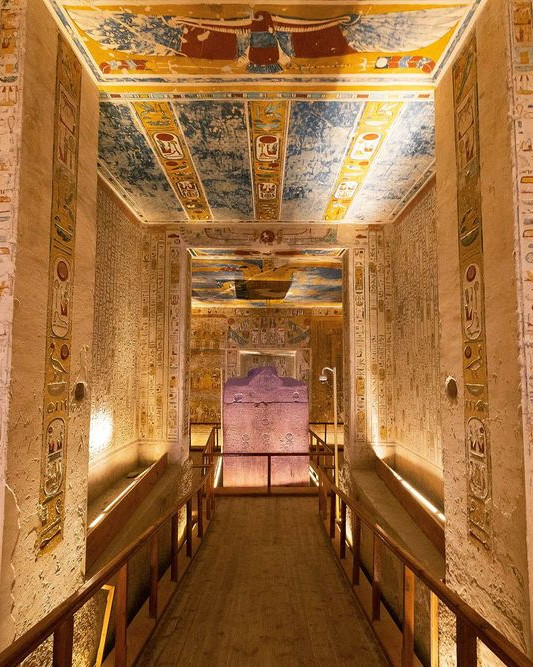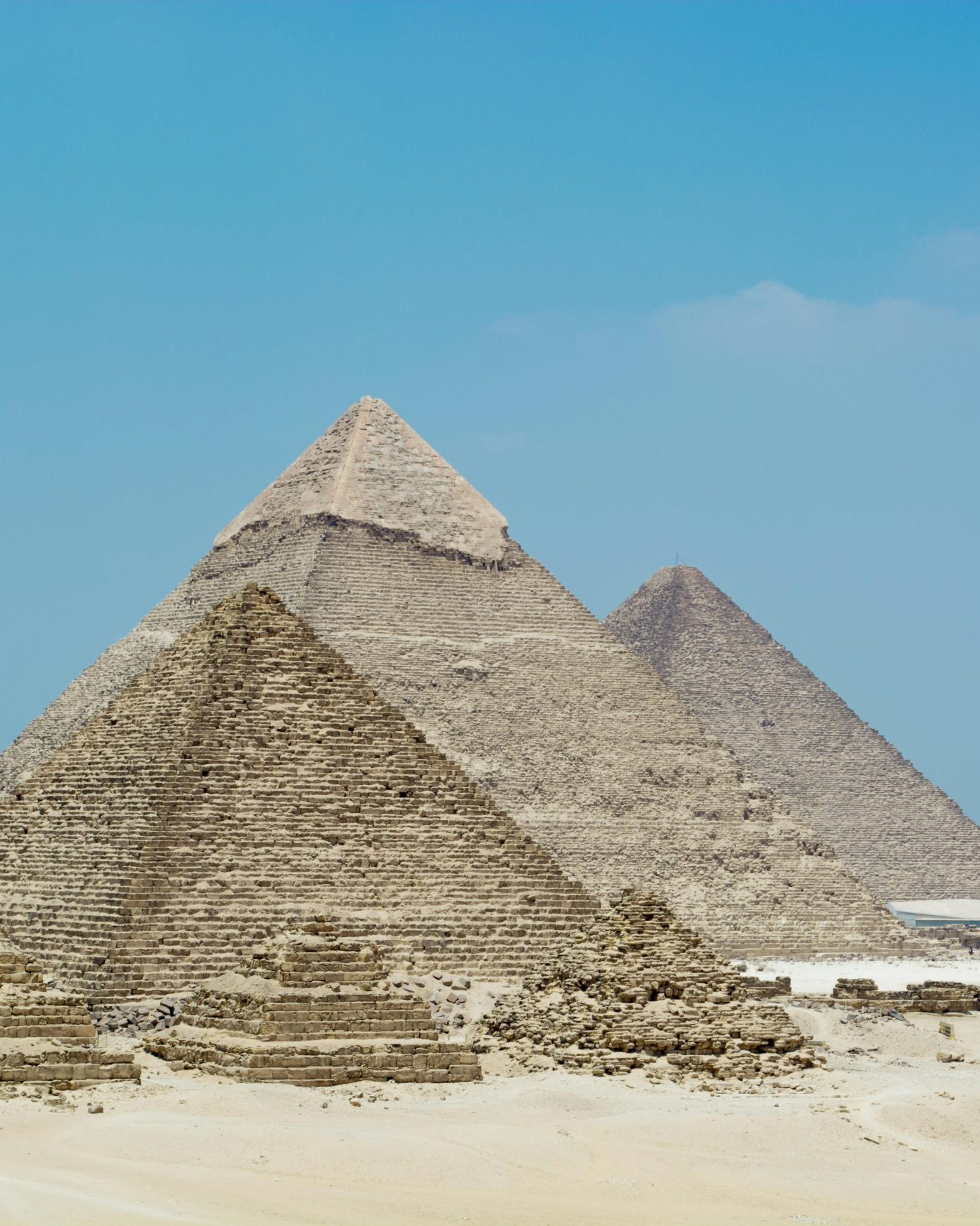Why would an ancient civilization dedicate 180 years to building a single temple? The Temple of Edfu, dedicated to the god Horus, isn’t just an architectural marvel; it’s a glimpse into the soul of ancient Egypt’s religious fervor. Constructed during the Ptolemaic period, beginning on August 23, 237 BC, and inaugurated on December 5, 57 BC, this massive structure captivates with its historical significance and cultural depth. Explore the incredible history behind its construction, the prominent figures who contributed, and the enduring purpose it served for centuries. Dive into the intricate past of this ancient marvel now.
Historical Background of the Temple of Edfu
The Temple of Edfu, constructed during the Ptolemaic period (305-30 BC), stands as one of the most well-preserved ancient Egyptian temples. It reflects the architectural and cultural advancements of the era. Situated on the west bank of the Nile in Upper Egypt, the temple is dedicated to the god Horus, symbolizing protection and power. Its construction began on August 23, 237 BC, and after an extensive period of 180 years, the temple was finally inaugurated on December 5, 57 BC.
Ptolemy III Euergetes initiated the construction of the Temple of Edfu, and subsequent rulers, including Ptolemy XII, contributed to its completion. The prolonged construction period highlights the temple’s significance and the meticulous efforts of the Ptolemaic dynasty to create a monumental structure for religious and cultural purposes. The involvement of multiple rulers also underscores the temple’s importance across different reigns.
- August 23, 237 BC: Construction begins.
- 206 BC: The Hypostyle Hall is completed.
- 142 BC: The Naos is finished.
- 70 BC: The Pylon is completed.
- December 5, 57 BC: Temple inauguration.
The Temple of Edfu served multiple purposes, primarily as a place of worship and offerings to the god Horus. It hosted various religious rituals and sacrifices, reflecting its central role in the spiritual life of ancient Egyptians. The temple’s inscriptions and reliefs provide valuable insights into the religious practices and beliefs of the time, making it an essential site for understanding ancient Egyptian culture.
Architectural Marvels of the Temple of Edfu
The Temple of Edfu is renowned for its Ptolemaic style architecture, which showcases the grandeur and intricacy of ancient Egyptian design. Spanning 137 meters in length and 79 meters in width, the temple features a variety of architectural elements that reflect both its religious significance and the advanced construction techniques of the time.
The Pylon
The temple’s entrance is marked by a large pylon made of sandstone. This monumental gateway is adorned with detailed reliefs and inscriptions that commemorate the victories of the Ptolemaic pharaohs and depict the god Horus in various mythological scenes. The pylon’s impressive height and intricate carvings make it a striking feature of the temple complex.
The Great Hypostyle Hall
The Great Hypostyle Hall is one of the most awe-inspiring areas within the Temple of Edfu. It contains 192 columns arranged in 16 rows of 12, creating a forest of stone pillars that support the massive roof. Each column is decorated with intricate reliefs and hieroglyphs, illustrating religious rituals and the divine lineage of the pharaohs. The hall’s grandeur and architectural complexity highlight the Ptolemaic commitment to monumental construction.
The Inner Hypostyle Hall
The Inner Hypostyle Hall, measuring approximately 50 x 80 meters, is another architectural marvel within the temple. Supported by 128 columns, this hall serves as a transitional space leading to the more sacred areas of the temple. The columns and walls are richly decorated with scenes of worship and offerings to Horus, providing a vivid glimpse into the religious practices of ancient Egypt.
The Naos
The Naos, a rectangular structure with a pitched roof, is the innermost sanctum of the Temple of Edfu. It features elaborate reliefs and hieroglyphs that narrate the myths and divine attributes of Horus. This sacred space was designed to house the statue of the god, making it the focal point of religious worship within the temple. The Naos’ intricate design and symbolic inscriptions further underscore the temple’s architectural and religious significance.
| Section | Dimensions | Key Features |
| The Pylon | Unknown | Sandstone, reliefs, inscriptions, mythological scenes |
| Great Hypostyle Hall | Unknown | 192 columns, 16 rows of 12, detailed carvings |
| Inner Hypostyle Hall | 50 x 80 meters | 128 columns, religious scenes |
| Naos | Rectangular, unknown | Pitched roof, reliefs, hieroglyphs |
Cultural and Religious Significance of the Temple of Edfu
The Temple of Edfu is primarily dedicated to Horus, a deity symbolizing protection and power in ancient Egyptian culture. This religious dedication underscores the temple’s importance as a sacred site where worshippers sought the god’s favor and protection.
The temple played a crucial role in religious practices and festivals. Numerous rituals were performed within its walls, including offerings and sacrifices. One of the most significant festivals celebrated at the Temple of Edfu was the annual “Feast of the Beautiful Meeting,” which commemorated the mythical marriage of Horus and Hathor. This event drew large crowds and involved elaborate ceremonies, further emphasizing the temple’s central role in the spiritual life of ancient Egyptians.
The myths and deities associated with the Temple of Edfu are rich and varied. Besides Horus, the temple includes chapels dedicated to other prominent gods such as Osiris and Min. The battle between Horus and Seth, a central mythological narrative, is vividly depicted in the temple’s reliefs and inscriptions. These stories not only highlight the temple’s mythological importance but also provide insight into the broader pantheon of Egyptian deities.
Inscriptions and reliefs within the temple offer a wealth of cultural and religious information. The “Building Texts,” in particular, are a rich source of Egyptian mythology and religious practices. These inscriptions detail various aspects of the temple’s construction, the rituals performed, and the gods worshipped. Through these detailed carvings, the Temple of Edfu serves as a historical record that offers valuable insights into the religious and cultural life of ancient Egypt.
Visitor Information and Tips for the Temple of Edfu
The Temple of Edfu is located in Upper Egypt, strategically positioned between Aswan and Luxor. This makes it an accessible day trip for those visiting either city. The temple is open to visitors from 9am to 4pm every day except Mondays. Admission costs 25 Egyptian pounds, which is approximately $1.50 USD. When visiting, it is advisable to wear modest clothing, avoiding tank tops and shorts to respect local customs and the sacred nature of the site.
Transportation to the Temple of Edfu is relatively straightforward. The most convenient way is to fly into Luxor, a well-connected hub with multiple international flights. From Luxor, you can take a bus or hire a taxi to reach Edfu. The bus ride offers a scenic view of the Nile and surrounding landscapes, while a taxi provides a more direct and private mode of transport.
- Wear comfortable walking shoes.
- Bring sunscreen and a hat for protection against the sun.
- Carry water to stay hydrated.
- Plan your visit early to avoid crowds and heat.
- Consider hiring a local guide for in-depth information.
Visitors to the Temple of Edfu can engage in several activities to enhance their experience. Guided tours are highly recommended, as they provide valuable insights into the temple’s history and significance. Interactive exhibits and lectures are also available, offering a deeper understanding of ancient Egyptian culture and the temple’s role in it. These activities ensure a well-rounded and informative visit, making the Temple of Edfu a must-see attraction in Egypt.
Visual Highlights of the Temple of Edfu
The Temple of Edfu is renowned for its intricate carvings and majestic granite statues of Horus. Upon entering the temple, visitors are greeted by two imposing granite falcon statues, symbolizing the god Horus. The walls of the temple are adorned with detailed reliefs depicting the Pharaoh presenting offerings and engaging in battles against enemies. These visual elements not only enhance the aesthetic appeal of the temple but also serve as historical records of ancient Egyptian religious practices and mythology.
- Granite statues of Horus: These statues at the entrance set the tone for the temple’s grandeur and religious significance.
- Pharaoh reliefs: Depictions of the Pharaoh presenting offerings and fighting enemies provide insight into the temple’s historical and religious context.
- Wall decorations: Scenes of offerings and religious rituals are intricately carved on the temple walls, illustrating the spiritual life of ancient Egyptians.
- Falcon statues: The two granite falcon statues at the entrance are a prominent feature, symbolizing the protective nature of Horus.
The significance of these visual highlights extends beyond mere decoration. They serve as a testament to the artistic and religious achievements of the ancient Egyptians. The detailed carvings and statues provide valuable insights into the rituals and beliefs that were central to Egyptian culture. By preserving these elements, the Temple of Edfu offers a unique glimpse into the past, allowing modern visitors to appreciate the rich heritage and spiritual depth of ancient Egypt.
Final Words
Exploring the history, architecture, and cultural significance of the Temple of Edfu reveals its rich legacy. Constructed over 180 years during the Ptolemaic period, it stands as a remarkable monument dedicated to Horus. The temple’s architectural marvels, from its grand pylon to the detailed Naos, highlight the intricate design.
Understanding the religious rituals, festivals, and myths tied to the temple enriches one’s appreciation. For visitors, practical tips and guided tours can enhance the experience.
The Temple of Edfu remains a vital link to ancient Egyptian civilization, captivating historians and travelers alike.
Top Attractions
Can a single structure embody the legacies of two powerful…
Why did the ancient Egyptians choose a secluded desert…
Are the Great Pyramids of Giza merely monumental tombs, or…





